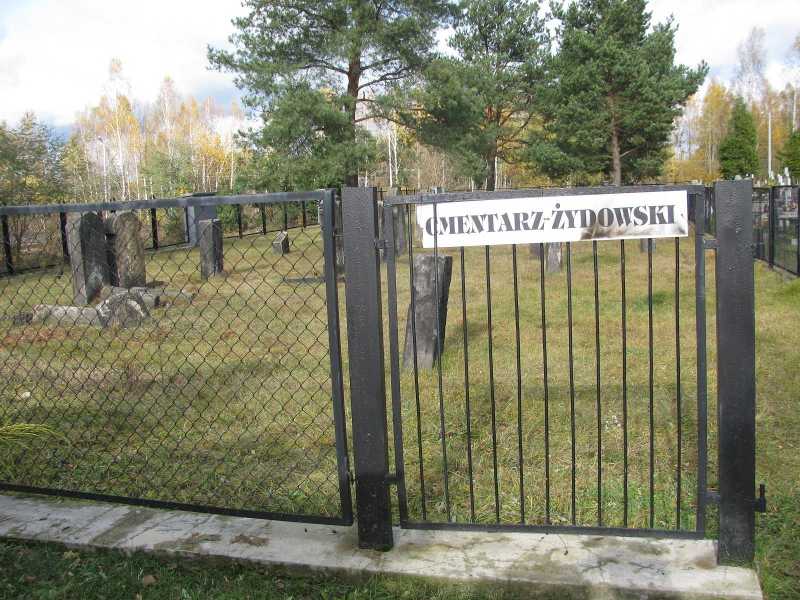 Alternate names: Skarżysko-Kamienna, Skarzysko Kamienna, Skarzhisk, Skarzysko, Kamienna-Skarzhisko, Kamenna-Skarzhisko, Каменне / Скаржиско-Каменна, 51°07' N, 20°54' E, 22 miles NNE of Kielce, 23 miles SSW of Radom. 1900 Jewish population: 329.
Alternate names: Skarżysko-Kamienna, Skarzysko Kamienna, Skarzhisk, Skarzysko, Kamienna-Skarzhisko, Kamenna-Skarzhisko, Каменне / Скаржиско-Каменна, 51°07' N, 20°54' E, 22 miles NNE of Kielce, 23 miles SSW of Radom. 1900 Jewish population: 329.
Yizkors: Skarzysko-Kamienna sefer zikaron (Tel Aviv, 1973)
Zakhor: yad le-kehilat kedoshe Skarzysko Kamienna (Tel Aviv, 1997).
This town in northern Świętokrzyskie Voivodeship by Kamienna river to the north of Świętokrzyskie Mountains; one of the voivodship's major towns. Prior to 1928, it bore the name of Kamienna; in less formal contexts usually only the first part of the name (Skarżysko) is used. A Jewish community was organized on the eve of World War I. In 1921 1,590 Jews (20%) engaged in hide processing, shoemaking, mechanics, and dyeing. In 1940, Germans mass executions of Poles killed 360 people in February and 760 in June). In 1942, the Germans set up a forced labor camp for the Jews, killing tens of thousands. In summer 1944, the camp was liquidated and the remaining prisoners either killed or transported to Buchenwald in Germany. On January 18, 1945 the town was liberated. The few Jewish survivors returned to the town, but local Polish threatened their lives. In February 1946 ,five Jewish residents were murdered by local Polish men including the head of the police and another policeman, who were put to trial in Lodz. Three got the death penalty. The remaining Jews left Poland. [July 2009]
JOWBR: Jewish Cemetery.
- Encyclopedia of Jewish Life (2001), p. 1191: "Skarzysko-Kamienna".
- Pinkas HaKehilot, Poland, Vol. 7 (1999), pp. 373-376: "Skarżysko-Kamienna".
- Shtetl Finder (1989), p. 93: "Skarzhisk".
 Museum of the History of Polish Jews
Museum of the History of Polish Jews- Jewish Records Indexing - Poland
Cemetery: photos. [July 2009]
US Commission No. POCE00278
The town is in Kielce region at 51º08N 20º52E, 144 km from Warsaw. The cemetery is on Lyzwy Street near the municipal cemetery. Present town population is 25,000-100,000 with no Jews.
- Town: Prezydent Miasta Skarzysko-Kamienna, 26-100 Skarzysko-Kamienna, ul. Sikorskozyo 18, tel. 3-27-89.
- Regional: Wojewodzki Konserwator Zabytkow, ul. IX Wiekow Kielc 3, Kielce, tel. 45634.
The unlocked cemetery key [sic] is at the town office above. There is no caretaker.
The earliest known Jewish community possibly was 1891 when the cemetery was established, but definitely 1923. 1921 Jewish population was 1590, 19.5%. Buried here was Zundel Kahanel-April 11, 1953, Dr. M. Sc. The last known Orthodox, Conservative, or Progressive Jewish burial was 1942 until the 1953 burial. The urban flat land, separate but near other cemeteries, has no sign, but has Jewish symbols on the gate or wall. Reached by turning directly off a public road, access is entirely closed with a continuous fence and a locking gate. The size of the cemetery is and was before WWII 1.24 ha. 20-100 gravestones, all in original condition with less than 25% toppled or broken, date from the 19th(?) and 20th centuries, with the earliest possibly 1915(?). The limestone or sandstone finely smoothed and inscribed stones or flat stones with carved relief decoration have Hebrew, Yiddish and Polish inscriptions. Some have traces of painting on their surfaces. There is a special memorial monument to Holocaust victims but no known mass graves. The municipality owns property used for cemetery. Properties adjacent are agricultural, residential, and municipal cemetery. Occasionally, organized Jewish group tours, organized individual tours, private visitors, and local residents stop. The cemetery was vandalized during World War II. Jewish groups abroad re-erected stones and fixed the wall and the gate in 1977. Pollution and incompatible development are slight threats. Vegetation is a constant problem disturbing stones.
Dr. Adam Penkalla, deceased, visited site and completed survey [date?]. Documentation: his own and that of R. Saks, and Folks-Sztyme 30 V 1987, p. 12-11.
UPDATE: The Jewish cemetery next to the municipal cemetery has an OPEN gate between the two and another gate to the Jewish cemetery from ul. Glogowa. The cemetery is small. If a grave is still there and marked, finding it is easy. A man called Kowalec (phonetic spelling) bought extra land by the cemetery and developed a new part where Jewish people are buried these days. Kowalec owns a pharmacy (probably new) on the corner of Staszica and Limanowskiego. Source: This email address is being protected from spambots. You need JavaScript enabled to view it. [October 2004].
UPDATE: Photos courtesy This email address is being protected from spambots. You need JavaScript enabled to view it. [photos taken October 2009]



